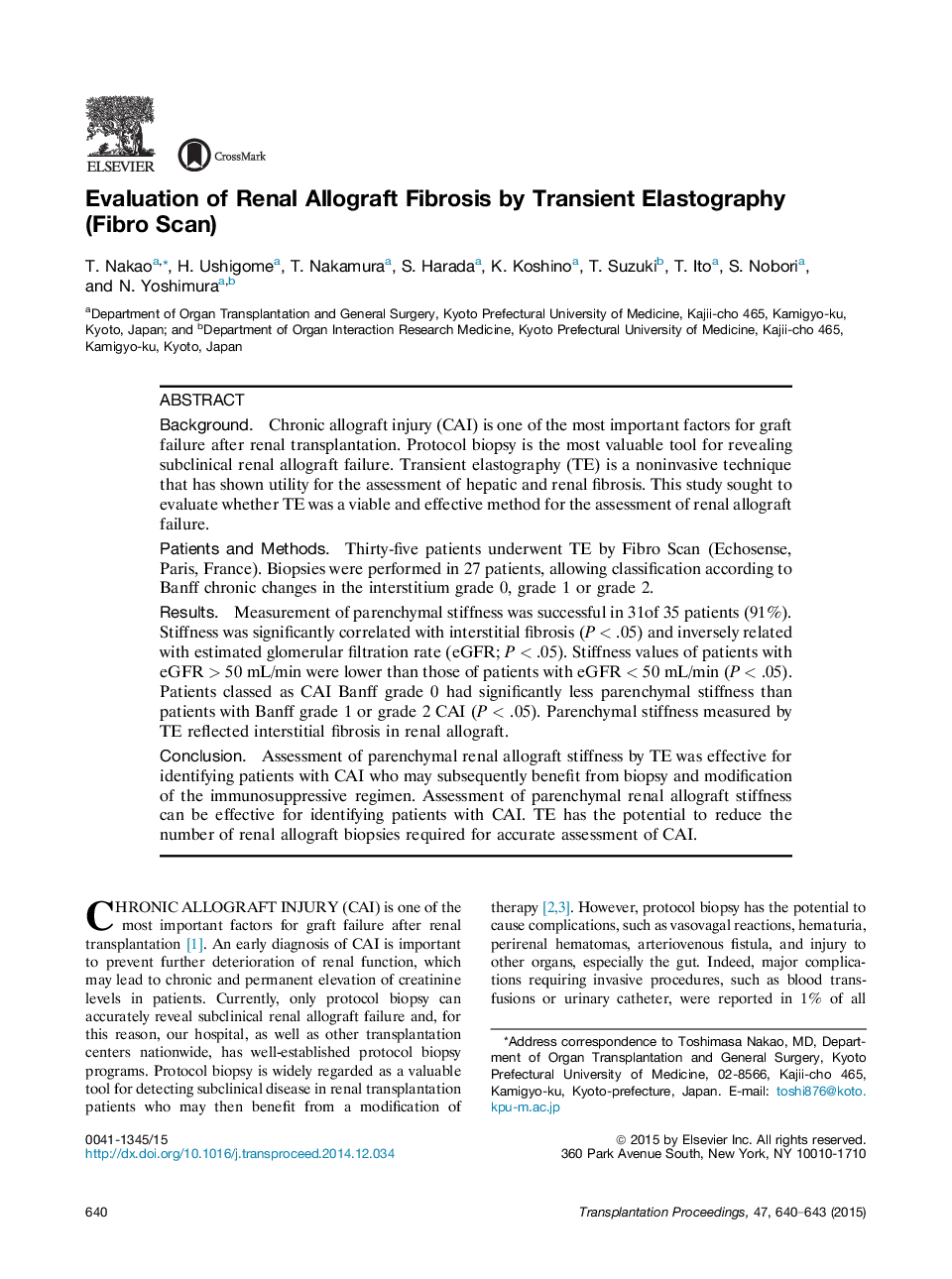| کد مقاله | کد نشریه | سال انتشار | مقاله انگلیسی | نسخه تمام متن |
|---|---|---|---|---|
| 6247810 | 1284520 | 2015 | 4 صفحه PDF | دانلود رایگان |
- Assessment of parenchymal renal allograft stiffness could be effective to identify patients with chronic allograft injury.
- Transient elastography has had a potential to reduce a number of renal allograft biopsies.
- Renal allograft stiffness might be in proportion to renal allograft fibrosis and inverse renal function.
BackgroundChronic allograft injury (CAI) is one of the most important factors for graft failure after renal transplantation. Protocol biopsy is the most valuable tool for revealing subclinical renal allograft failure. Transient elastography (TE) is a noninvasive technique that has shown utility for the assessment of hepatic and renal fibrosis. This study sought to evaluate whether TE was a viable and effective method for the assessment of renal allograft failure.Patients and MethodsThirty-five patients underwent TE by Fibro Scan (Echosense, Paris, France). Biopsies were performed in 27 patients, allowing classification according to Banff chronic changes in the interstitium grade 0, grade 1 or grade 2.ResultsMeasurement of parenchymal stiffness was successful in 31of 35 patients (91%). Stiffness was significantly correlated with interstitial fibrosis (P < .05) and inversely related with estimated glomerular filtration rate (eGFR; P < .05). Stiffness values of patients with eGFR > 50 mL/min were lower than those of patients with eGFR < 50 mL/min (P < .05). Patients classed as CAI Banff grade 0 had significantly less parenchymal stiffness than patients with Banff grade 1 or grade 2 CAI (P < .05). Parenchymal stiffness measured by TE reflected interstitial fibrosis in renal allograft.ConclusionAssessment of parenchymal renal allograft stiffness by TE was effective for identifying patients with CAI who may subsequently benefit from biopsy and modification of the immunosuppressive regimen. Assessment of parenchymal renal allograft stiffness can be effective for identifying patients with CAI. TE has the potential to reduce the number of renal allograft biopsies required for accurate assessment of CAI.
Journal: Transplantation Proceedings - Volume 47, Issue 3, April 2015, Pages 640-643
